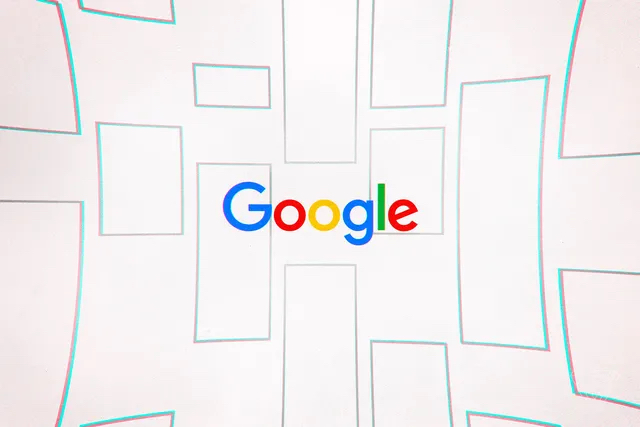Google is adding a range of new AI-powered features to Maps, including more immersive navigation, easier-to-follow driving directions, and better organized search results. The end result is an experience that will likely remind many users of Google Search.
Some of this news has already been announced, like Immersive View, which is now coming to more cities. Other aspects are intended to enhance previously available features, like EV charging station availability.
But the biggest takeaway is that Google wants Maps to be more like Search: a place where people can obviously come get directions or find coffee shops and EV chargers but also enter vague queries like “fall foliage,” “latte art,” or “things to do in Tokyo” and get a whole bunch of actually useful hits. Google said it wants people to use Maps to discover new places or experiences, all while under the auspices of its all-powerful algorithm.
“AI has really supercharged the way we map,” said Chris Phillips, vice president and general manager of Geo, the team at Google that includes all of its geospatial location mapping products. “It plays a key role in everything from helping you navigate, [helping you] commute, discover new restaurants, where to go, when to go. These are all really important decisions that people are making all the time.”
With Google locked in a tight competition with Apple, Microsoft, and others around the use of AI, the company is banking on its more familiar and popular products, like Google Maps, to help it maintain a leg up over its rivals. And as Google Search becomes more AI-driven, it’s only natural that these other products follow a similar lead.
The future of Google Maps, according to Phillips, is a product that’s more “visual and immersive” but also one that helps you make “more sustainable choices,” like riding transit or a bike. Google is also expanding its API offerings to developers, cities, and especially automotive companies, so they can tweak and improve Maps for the in-car navigation experience.
One of the ways Google is using AI to make Maps more like Search is to analyze “billions” of user-uploaded photos to help people find random items, like coffee shops that offer lattes with panda faces, said Miriam Daniel, Google Maps team leader. People can type specific questions into Maps, much in the way they do with Search, and get a list of results for nearby businesses or locations that match the query based on a real-time analysis of user photos.
“To give you the inspiration when you need it, we’re going to better organize search results for these broad queries,” Daniel said.
Google is using neural radiance fields, which is a form of generative AI, to sort through billions of images, including aerial photos, street imagery, and indoor snaps to create a 360-degree experience, Daniel said. Traffic information is culled from historical data and filtered through Google’s predictive algorithm to help users figure out the best time to get somewhere with the least amount of traffic.
Google also wants to help answer one of today’s most burning questions: is the EV charging station I’m driving toward actually going to work? Studies have shown that roughly 25 percent of chargers are down or inoperable at any given time. Google Maps will now tell you when a charger was last used to help EV owners figure out whether they’re wasting their time with a nonoperational charger. If the station was used a few hours ago, chances are it’s working. If it’s been a few days or weeks since it was used, you might want to find another charger instead. Google Maps is also adding more EV charging details, such as whether a charger is compatible with your EV and whether it’s fast, medium, or slow.
For more EV charging information while you’re driving, Google is offering updated Places APIs to developers to build out these features for cars with navigation systems based on Google Maps. Now, car companies can use the Places API to build out more EV charging information so their customers can see real-time location information, plug type, and charging speeds directly on their vehicle’s infotainment screens.
To improve Google Maps’ stickiness, the company is also rolling out more flashy features, like Immersive View, which was first announced earlier this year. This feature offers users a 3D view of a place to help them see where they’re supposed to go, while also offering other tidbits of information, like local business locations, weather, and traffic. The feature is now available for Android and iOS users in 15 cities, including Amsterdam, Barcelona, Dublin, Florence, Las Vegas, London, Los Angeles, Miami, New York, Paris, San Francisco, San Jose, Seattle, Tokyo, and Venice.
Google is rebranding its augmented reality feature “Search with Live View” to “Lens in Maps” in which someone taps the Lens in the search bar and holds up their camera to find information about the nearest train stations, coffee shops, ATMs, or whatever is nearby. In this way, Google is trying to cut out the middleman by having to search for businesses that are close by and allowing you to use your phone’s camera as an AR tool instead. Lens in Maps is now live in 50 more cities, including Austin, Las Vegas, Rome, São Paulo, and Taipei.
Navigation in Google Maps is getting a makeover: updated colors, more realistic buildings, and improved lane details for tricky highway exits. These improvements are coming to 12 countries, including the US, Canada, France, and Germany. US drivers will also start to see, for the first time, HOV lanes, which is coming to Android, iOS, and cars with Google built-in. And speed limit information is coming to around 20 new countries.
The question is, do Google Maps users want all of this stuff? Trying to pack too much tech into one product is the hallmark of feature bloat, which can drive some users away. But Google is betting that pretty visuals, more AI-driven search results, and other bells and whistles can help elevate it over other map products, like Apple Maps, which itself is finally starting to eat into Google’s market share.
“The foundation of all the work we do is to build the most comprehensive, fresh, accurate information to represent the real world,” Phillips said. “This is key for us, and we like to talk about the map as being alive.”





